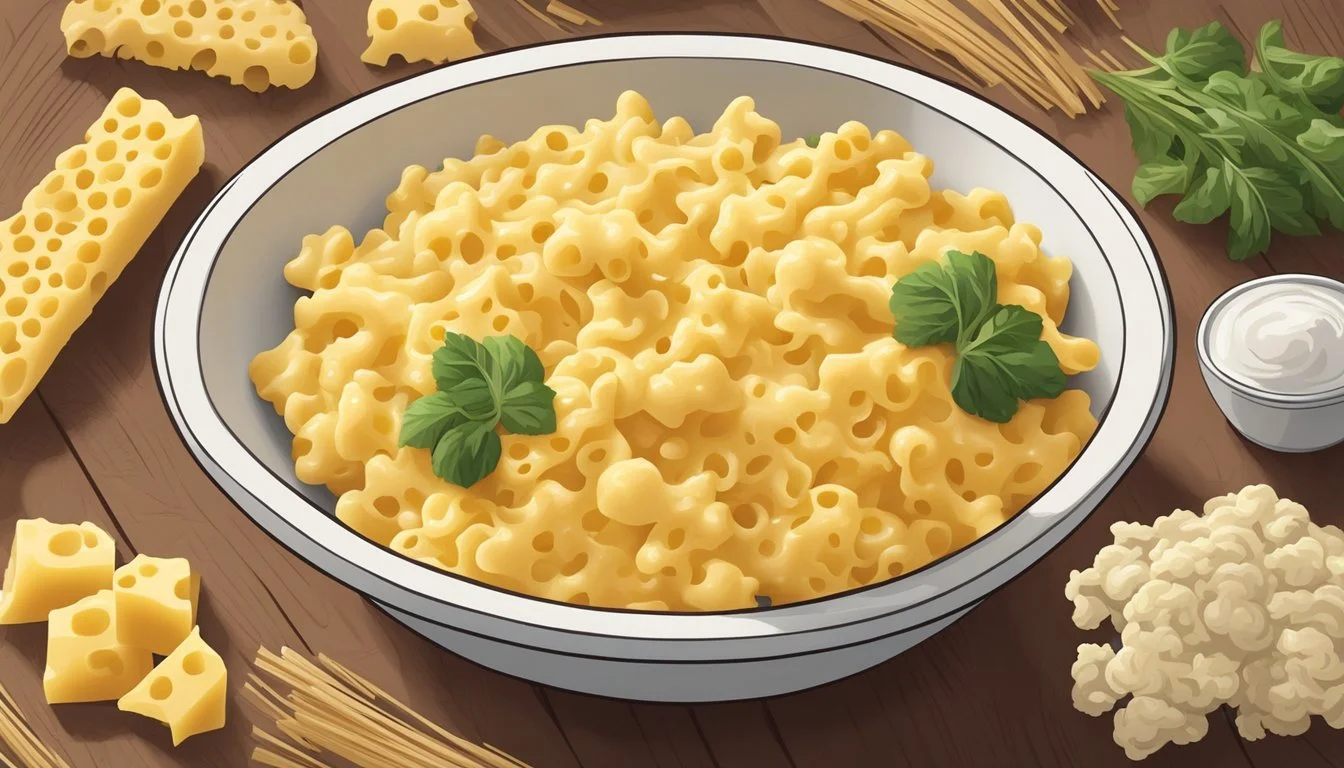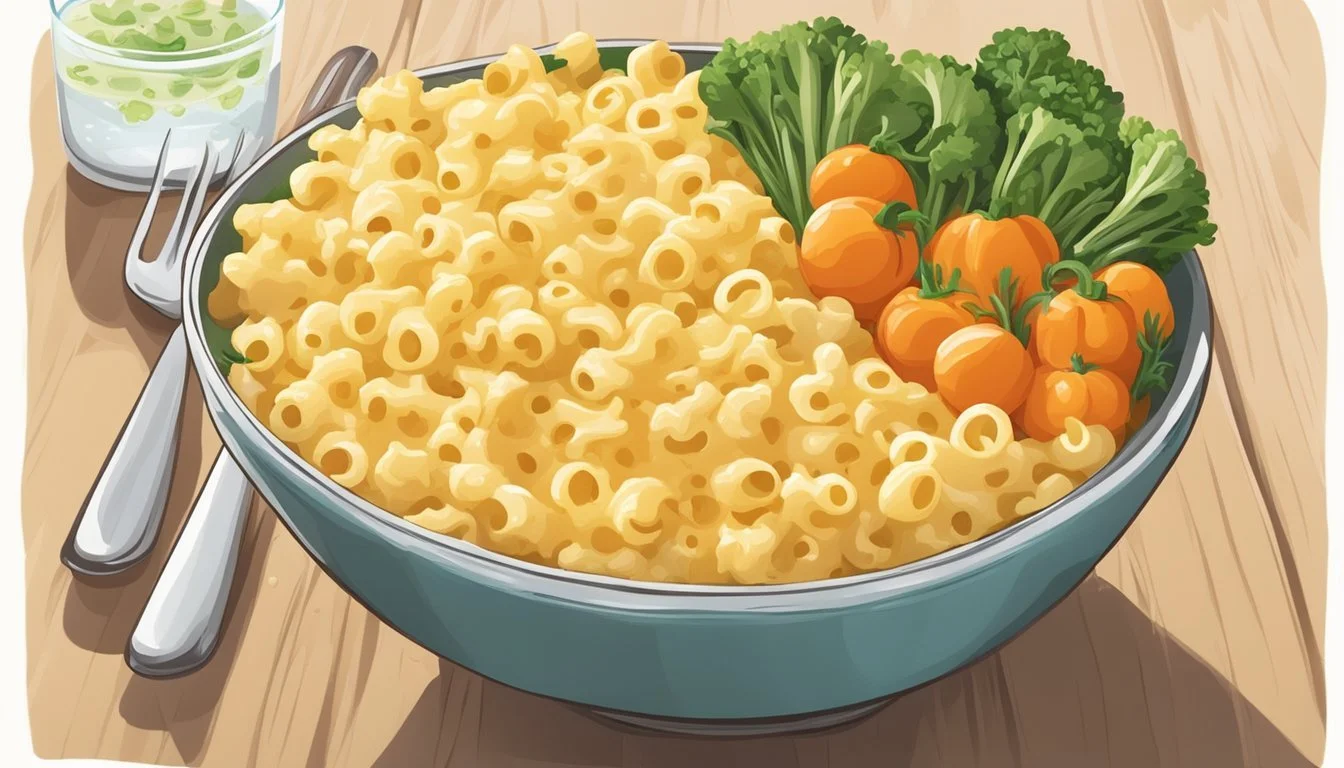How Long Does Gluten-Free Mac and Cheese (Cauliflower-Based) Last?
Storage Tips and Shelf Life
Gluten-free cauliflower mac and cheese offers a healthier twist on a classic comfort food by using nutrient-rich cauliflower instead of traditional pasta. This dish not only caters to those with gluten sensitivities but also packs a flavorful punch that can appeal to any mac and cheese lover. The shelf life of gluten-free cauliflower mac and cheese depends on various factors, including how it is stored and the ingredients used.
Typically, this dish can last up to three to five days in the refrigerator when stored in an airtight container. It's recommended to let the mac and cheese cool completely before sealing and refrigerating to maintain its texture and flavor. By ensuring proper storage, one can enjoy the wholesome and creamy experience of cauliflower mac and cheese for several meals.
If one wishes to keep it for a longer duration, freezing is a viable option. Cauliflower mac and cheese can be kept frozen for up to two months. When freezing, use a freezer-safe container and consider portioning it to make reheating easier. This way, gluten-free comfort food can be ready whenever the craving strikes.
Understanding Gluten-Free Mac and Cheese
Gluten-free mac and cheese is a comforting classic adapted for those avoiding gluten. The use of cauliflower can add nutritional benefits while keeping the dish delicious.
Defining Gluten-Free
A gluten-free diet excludes the protein gluten, found in grains like wheat, barley, and rye. Gluten-free macaroni noodles are typically made from rice, corn, or quinoa. These alternatives provide a similar texture to traditional pasta, making them perfect for mac and cheese.
For those with celiac disease or gluten sensitivity, avoiding gluten is critical. Gluten can cause digestive issues and other health problems. Splendidly, gluten-free dishes like mac and cheese allow them to enjoy beloved comfort foods without health risks.
Benefits of Cauliflower in Mac and Cheese
Cauliflower offers multiple benefits when included in mac and cheese. Using cauliflower florets instead of traditional pasta makes the dish lower in carbohydrates, which is valuable for those monitoring their carb intake.
Cauliflower is rich in fiber and essential vitamins such as C and K. These nutrients contribute to a healthier diet. Additionally, the mild taste of cauliflower integrates well with cheese, retaining the creamy texture that defines mac and cheese.
Preparation methods for cauliflower-based mac and cheese can include boiling or roasting the cauliflower before mixing it with the cheese sauce. This approach ensures it remains tender and flavorful, similar to traditional macaroni but with added health benefits.
Ingredients Breakdown
Gluten-free, cauliflower-based mac and cheese relies on specific components to achieve its creamy texture, flavorful profile, and cheesy goodness. Understanding the essential ingredients can help you master this dish.
Essential Components for Creaminess
A creamy texture is crucial for mac and cheese. The base often includes a combination of cauliflower and cashews. Cauliflower is first boiled until tender. Cashews, when blended, add a rich, creamy consistency.
Milk or cream is sometimes added to enhance smoothness. In vegan versions, ghee or plant-based butter provides that desirable creaminess. These components are blended together to form the base sauce, creating a velvety texture.
Seasoning for Flavor Enhancement
Seasoning plays a vital role in defining the flavor of gluten-free, cauliflower-based mac and cheese. Basic seasonings include salt and black pepper. Additional seasonings like garlic powder, mustard, and nutritional yeast amplify flavors.
Paprika or cayenne pepper can introduce a mild heat. Sea salt enhances all tastes, making it a must-add. These spices and seasonings blend seamlessly, ensuring each bite is flavorful and well-balanced.
Recommended Cheese Varieties
Cheese is the star of mac and cheese. Choices include cheddar, which melts well and has a sharp taste. Parmesan provides a tangy edge. For a spicy kick, pepper jack can be used. Gruyere offers a nutty, assertive flavor.
Monterey Jack is mild and creamy. Mozzarella ensures a stringy, gooey texture. For a bolder taste, sharp cheddar or white cheddar work wonderfully. Mixing various cheeses can yield complex, delightful flavor combinations.
Preparation and Cooking Guide
This guide provides detailed steps for preparing and baking a delicious gluten-free cauliflower mac and cheese. Follow these instructions to achieve the perfect balance of creamy and crispy textures.
Cauliflower Prep and Cooking Techniques
Begin by preheating the oven to 400°F. Cut the cauliflower into large, bite-size florets. Bring a medium-sized pot of water to a boil and add a tablespoon of salt.
Boil the cauliflower florets until they are soft but not mushy. This usually takes about 8-10 minutes. Drain the cauliflower thoroughly using a colander. Let them cool slightly before moving on to the next steps.
Separately, prepare the pasta. Follow the package instructions to cook it until al dente. Drain and set aside with the cauliflower.
Combining Ingredients
In a large pot, melt butter over medium heat. Add chopped onion and minced garlic, cooking until fragrant, approximately 5 minutes.
Next, create a roux by adding gluten-free flour to the butter mixture and cooking until it becomes slightly golden. Slowly whisk in milk to form a creamy sauce. Add grated cheese to the sauce, melting it slowly.
In a large bowl, combine the cooked cauliflower and pasta with the cheese sauce. Ensure every piece is well-coated.
For an extra creamy texture, consider adding Greek yogurt or cooking cream. Season the mixture with salt and pepper.
Baking Considerations
Prepare a 9x12 inch baking dish by greasing it with olive oil or butter. Pour the combined cauliflower and pasta mixture into the dish.
Top with additional grated cheese. Optionally, mix breadcrumbs with a little melted butter and sprinkle this on top for a crunchy finish.
Bake in the preheated oven for 25-30 minutes until the edges are bubbling. Turn on the broiler for an extra 6-9 minutes to make the top beautifully golden and crispy.
Allow the dish to cool slightly before serving. The broiling step ensures a crisp breadcrumb topping, adding a delightful texture contrast.
Storage and Shelf Life
Properly storing gluten-free mac and cheese, especially those with cauliflower, is essential for maintaining its quality and safety. Key factors include storage conditions, detecting signs of spoilage, and methods for freezing and reheating leftovers.
Optimal Storage Conditions
To keep gluten-free mac and cheese with cauliflower fresh, store it in an airtight container.
Refrigerate it at or below 40°F (4°C). This will maintain its freshness and prevent bacterial growth for 3-5 days.
If planning for longer storage, consider freezing the dish in portioned containers, which allows for easy reheating and reduces waste.
Determining Freshness
Freshness can be judged by smell, taste, and texture. Fresh mac and cheese should smell cheesy without any sour or off odors. The taste should be rich and creamy, while the texture should be firm yet tender.
Watch for signs of mold or changes in color, which indicate spoilage. If these signs are present, discard the dish immediately.
Freezing and Reheating Tips
When freezing gluten-free mac and cheese with cauliflower, cool the dish completely before transferring it to freezer-safe containers. Label with the date to track its shelf life, which is typically up to 3 months.
Thaw in the refrigerator overnight before reheating.
Reheat in an oven, microwave, or air fryer until reaching an internal temperature of 165°F (74°C). This ensures the dish is safe to eat and maintains its creamy texture.
Avoid refreezing thawed leftovers, as this can affect quality and food safety.
Nutritional Benefits and Dietary Considerations
Cauliflower-based gluten-free mac and cheese provides an excellent alternative for those looking to enjoy a classic dish while adhering to certain dietary restrictions. This section examines its macronutrient profile and its suitability for various dietary needs.
Macronutrient Profile
Cauliflower-based gluten-free mac and cheese is low in calories and carbs compared to traditional recipes. Cauliflower is a nutrient-dense vegetable, rich in vitamins C and K, and provides a good source of fiber, aiding digestion and overall gut health.
With added cheese, this dish offers a respectable amount of protein, enhancing satiety and supporting muscle maintenance. The combination of cauliflower and cheese also ensures a good balance of healthy fats, essential for nutrient absorption and brain health. Carbs are significantly reduced due to the lower carbohydrate content in cauliflower, making it a suitable option for low-carb diets.
Suitability for Dietary Restrictions
This cauliflower-based mac and cheese is an excellent option for gluten-free diets, as it uses no wheat-based ingredients. For those with dairy sensitivities, using dairy-free cheese can make the dish dairy-free. To cater to vegan preferences, further modifications include using plant-based milk and vegan cheese.
Additionally, this recipe can fit well within a low-carb lifestyle due to the substitution of high-carb pasta with cauliflower. This makes it suitable for those on ketogenic diets. Overall, this dish provides a versatile and healthy option that can be adapted to meet various dietary requirements while still delivering on flavor and nutrition.
Recipe Variations and Ideas
There are numerous ways to enhance the flavor and nutrition of cauliflower-based gluten-free mac and cheese. Customizing ingredients and toppings can create a unique and delicious dish suitable for any preference.
Adding Vegetables and Proteins
Incorporating various vegetables can boost the nutritional content and flavor profile of cauliflower mac and cheese. Broccoli florets are a popular choice, providing a complementary taste and texture. Spinach and kale can be stirred into the mix for added vitamins and a healthy twist.
For added protein, consider grilled chicken or bacon. Small, sautéed mushrooms can bring an earthy richness, while peas or carrots add a sweet contrast. Each addition changes the dynamics of the dish, making every bite more intriguing.
Alternative Toppings and Cheeses
The topping options for cauliflower mac and cheese are versatile. A classic option is a crispy breadcrumb topping made from gluten-free breadcrumbs or panko breadcrumbs. This adds a satisfying crunch to the creamy base.
Experimenting with different cheeses can also transform the dish. While cheddar is a staple, mixing in gruyère or parmesan can elevate the flavor. Sprinkling shredded cheese varieties on top before baking can create a delightful crust. These variations ensure that the dish remains exciting and flavorful.








